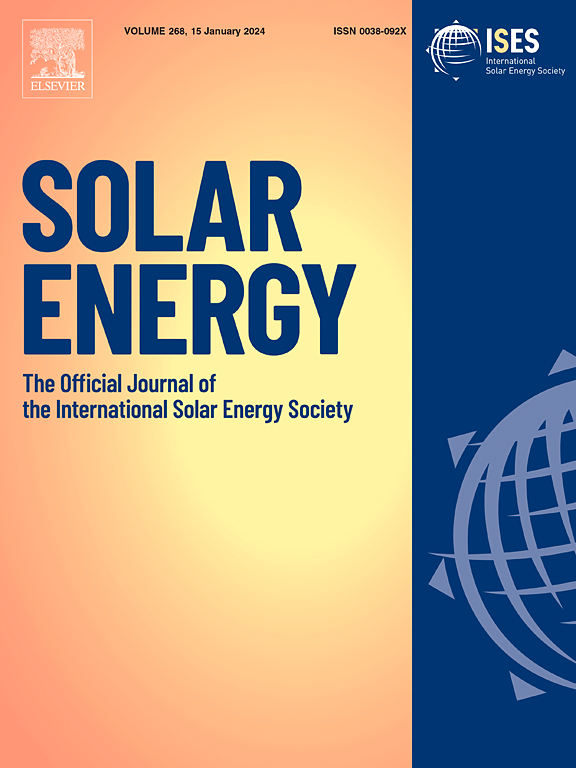Solar-Driven additive Manufacturing: Design and development of a novel sustainable fabrication process
IF 6
2区 工程技术
Q2 ENERGY & FUELS
引用次数: 0
Abstract
Additive Manufacturing (AM) is revolutionizing industries by enabling layer-by-layer fabrication of complex components. Among AM techniques, Laser Powder Bed Fusion (LPBF) is widely used but is energy-intensive, limiting its sustainability. This study explores the potential of concentrated solar energy as an alternative heat source for sintering Thermoplastic Polyurethane (TPU) in a solar-powered 3D printing process. A custom-designed solar 3D printer, equipped with stepper motors and an Arduino UNO for precise control, was utilized to evaluate critical process parameters such as feed rate, hatch spacing, and layer thickness. The results indicate that feed rate and hatch spacing are pivotal to energy density, directly influencing sintering quality. Optimal sintering occurred at feed rates between 100–200 mm/min, which provided sufficient energy for uniform layer fusion, balancing surface finish and mechanical strength. Larger feed rates resulted in incomplete sintering and weaker parts, while a hatch spacing of 1.67 mm offered efficient pass binding with reduced build time. The study successfully demonstrated the fabrication of multilayer TPU structures using solar energy, achieving mechanical properties comparable to conventional LPBF techniques. This solar-powered approach underscores the potential for integrating renewable energy into additive manufacturing, offering a sustainable alternative to laser-based systems. Future refinements, such as dynamic solar tracking and real-time parameter adjustments, could further enhance its industrial viability. By leveraging renewable energy, this research represents a significant step toward eco-friendly manufacturing solutions, reducing energy consumption and carbon footprint while maintaining high-quality outputs.
通过逐层制造复杂部件,快速成型制造(AM)技术正在彻底改变各行各业。在增材制造技术中,激光粉末床熔融技术(LPBF)得到了广泛应用,但该技术能耗高,限制了其可持续发展。本研究探讨了在太阳能驱动的三维打印过程中,将聚光太阳能作为烧结热塑性聚氨酯(TPU)的替代热源的潜力。定制设计的太阳能 3D 打印机配备了步进电机和用于精确控制的 Arduino UNO,用于评估进料速率、舱口间距和层厚度等关键工艺参数。结果表明,进料速率和舱口间距对能量密度至关重要,直接影响烧结质量。最佳烧结发生在进料速度为 100-200 毫米/分钟之间,这为均匀的层融合提供了足够的能量,同时兼顾了表面光洁度和机械强度。较大的进料速度会导致烧结不完全和零件强度降低,而 1.67 毫米的舱口间距则能在缩短制造时间的同时实现高效的层间结合。这项研究成功展示了利用太阳能制造多层热塑性聚氨酯结构,其机械性能可与传统的 LPBF 技术相媲美。这种太阳能驱动的方法强调了将可再生能源集成到增材制造中的潜力,为激光系统提供了一种可持续的替代方案。未来的改进,如动态太阳能跟踪和实时参数调整,将进一步提高其工业可行性。通过利用可再生能源,这项研究向生态友好型制造解决方案迈出了重要一步,在保持高质量产出的同时减少了能源消耗和碳足迹。
本文章由计算机程序翻译,如有差异,请以英文原文为准。
求助全文
约1分钟内获得全文
求助全文
来源期刊

Solar Energy
工程技术-能源与燃料
CiteScore
13.90
自引率
9.00%
发文量
0
审稿时长
47 days
期刊介绍:
Solar Energy welcomes manuscripts presenting information not previously published in journals on any aspect of solar energy research, development, application, measurement or policy. The term "solar energy" in this context includes the indirect uses such as wind energy and biomass
 求助内容:
求助内容: 应助结果提醒方式:
应助结果提醒方式:


